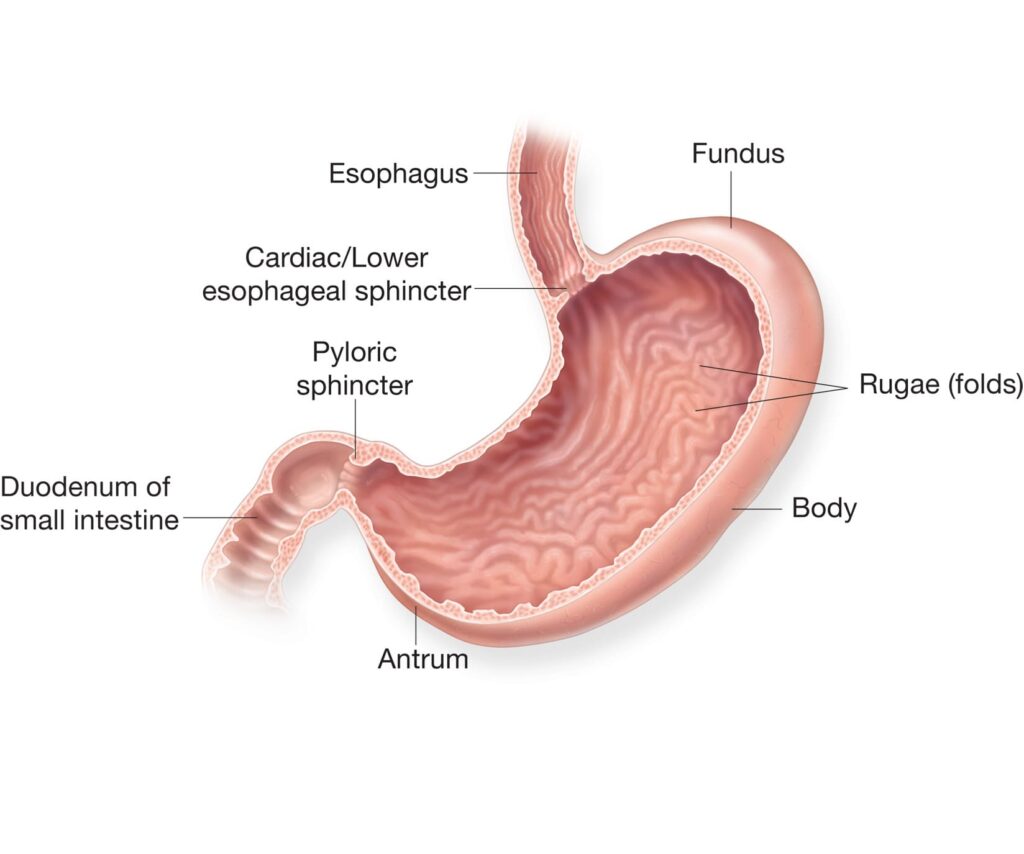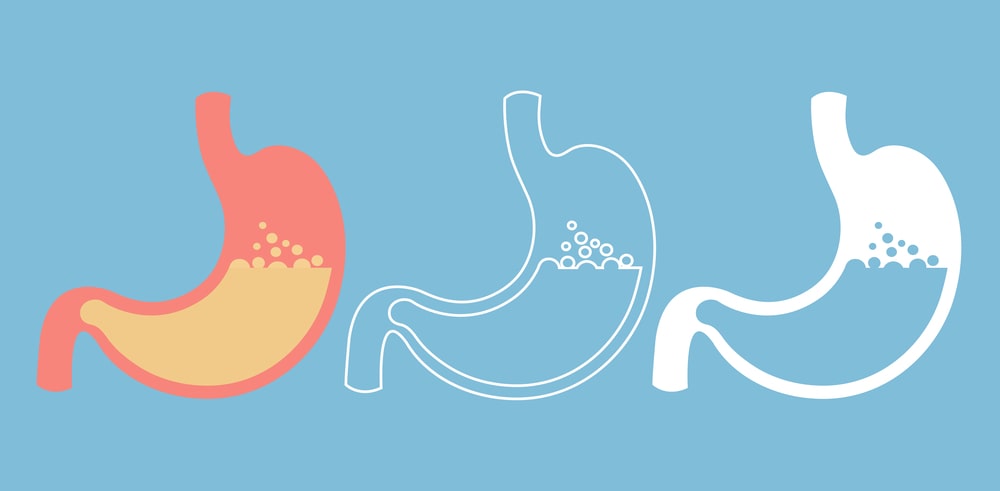- It is J shaped hollow organ lying in the abdomen under the diaphragm. It is continuous at the cardiac sphincter and with the duodenum at the pyloric sphincter.
- The stomach is divided into 3 regions the fundus, body and antrum. When the stomach is inactive the pyloric sphincter is relaxed and opened and when the stomach contains food the sphincters are closed.
- The stomach has 2 curvatures the lesser curvature is short and lies on the posterior surface of the stomach. The greater curvature is long and towards the pyloric sphincter.
- The stomach consists of 3 layers of smooth muscle fibres they are the outer layer of longitudinal fibres and middle layer of circular fibres and the inner layer of oblique fibres.
- The innermost part of the stomach is relatively thick and consists of numerous folds called Rugae. Rugae contain a very large number of tubular glands which secrete gastric juice.

- Gastric juice: There is always a small quantity of gastric juice present in the stomach even when it contains no ford this is known as fasting juice. Secretion reaches maximum level about 1hr after a meal
There are three phases of secretion of gastric juice they are:
- Cephalic phase: This flow of juice occurs before the food reaches the stomach and is due to reflex stimulation of the vagus nerve initiated by smell, sight, and taste of food.
- Gastric phase: The further secretion of gastric juice takes place after the entry of food into the stomach due to the stimulation and activation of gastrin hormone.
- Intestinal phase: When the food enters the duodenum further secretion of gastric juice is stopped this is known as the intestinal phase. Cholecystokinin and secretin produced by the endocrine cells of the intestinal mucosa slow down the secretion of gastric juice.
Composition of gastric juice: About 2 liters of gastric juice is secreted daily and consists.
- Water and mineral salts
- Hydrochloric acid and intrinsic factor
- Mucus and inactive enzyme precursor such as pepsinogen.
Functions of gastric juice:
- The enzymes like pepsin and hydrochloric acid present in gastric juice help in the digestion of proteins into peptones and proteases.
- Hydrochloric acidification of the food stops salivary amylase and kills the ingested microbes.
- Renin present in the gastric juice acts on the milk protein caseinogen and converts into casein which is then digested by pepsin.
- Gastric juice excretes toxins and heavy metals and certain drugs like opium.
- The intrinsic factor present in the gastric juice helps in the absorption of Vit B12.
Functions of Stomach:
- Mechanical functions: It acts as a reservoir of food and mixing\g of food within the digestive juices. It also helps to liquefy and propels the food further into the duodenum.
- It secretes gastric juice which converts food into chyme and helps indigestion.
- Water, alcohol, glucose and certain drugs are absorbed from the wall of the stomach. The intrinsic factor present in the gastric juice helps in the absorption of Vit B12.
| QUESTION BANK 1. Write the anatomy and physiology of the stomach. |
Make sure you also check our other amazing Article on : Anatomy and Function of Liver
